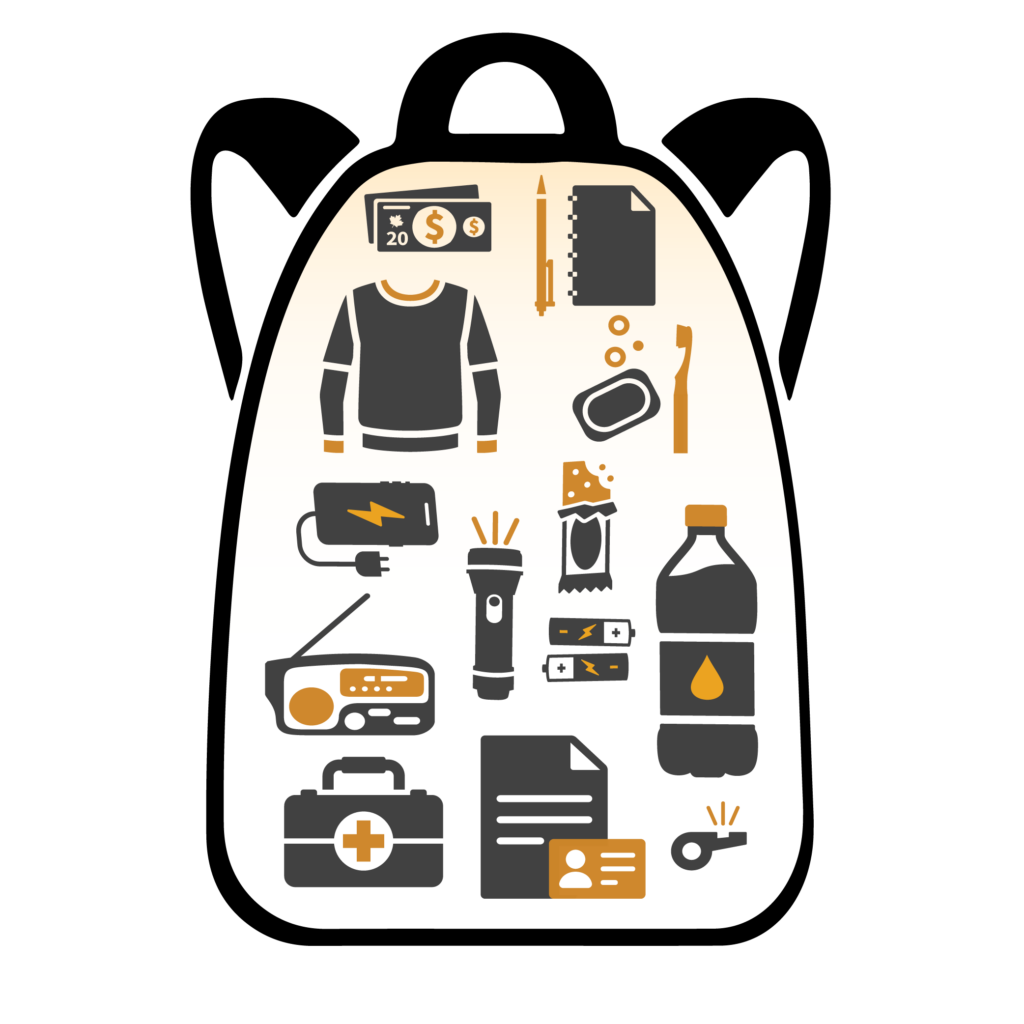Be prepared. Make a plan.
To prepare for or recover from a disaster, it’s important to develop a plan. Begin by putting together emergency supplies and getting familiar with the resources available to help you. By taking these steps, you can improve your readiness and resilience in the event of an emergency.
Make Your Plan
Your family may not be together when an emergency occurs. Plan how to meet or how to contact one another and discuss what you would do in different situations.
- Determine the best ways to evacuate your home in case of an emergency such as a home fire.
- Make sure adults and older children know where fire extinguishers, water, and electric utilities are located.
- Make sure everyone in the house knows the location of your emergency kit.
- Establish a safe place for your family to meet outside your home and outside of Town.
- Include a plan for evacuating your pets – think about food, water, leashes, medications, copy of vaccination records, identification tags, and crates.
- Depending on the emergency, and if it is safe to remain in your home, prepare to be self-sufficient for at least three days (or seven to 10 days in a health emergency).
- If a member of your family has special needs that would require extra assistance, include those details into your family emergency plan and emergency kit.
- If possible and needed, plan for transportation assistance.
- Know the plans for your workplace, school, community center, etc. in the event a disaster happens when you are not at home.
- Practice your evacuation plan frequently.
Visit PreparedBC for more information.
Build Your Kit
Put supplies in one or 2 containers, such as plastic bins or duffel bags. Store them in an area of your home that’s easy to get to, such as a hall closet, spare room or garage.
- Non-perishable food: minimum three-day to one-week supply, with a manual can opener
- Water: four litres per person, per day for drinking and sanitation
- Phone charger, power bank or inverter
- Battery-powered or hand-crank radio
- Battery-powered or hand-crank flashlight
- Extra batteries
- First-aid kit and medications
- Personal toiletries and items, such as an extra pair of glasses or contact lenses
- Copy of your emergency plan
- Copies of important documents, such as insurance papers and identification
- Cash in small bills
- Garbage bags and moist towelettes for personal sanitation
- Seasonal clothing, sturdy footwear and emergency blanket
- Dust masks
- Whistle
- Help/OK Sign (PDF): Display the appropriate side outward in your window during a disaster.

Grab-and-Go Bag
A grab-and-go bag is a small emergency kit that’s easy to take with you, in case you need to leave right away. It’s a good idea to make grab-and-go bags for your home, workplace and vehicle.
Include:
- Food (ready to eat) and water
- Phone charger and battery bank
- Small battery-powered or hand-crank radio
- Battery-powered or hand-crank flashlight
- Extra batteries
- Small first-aid kit and personal medications
- Personal toiletries and items, such as an extra pair of glasses or contact lenses
- Copy of your emergency plan
- Copies of important documents, such as insurance papers and identification
- Cash in small bills
Local map with your family meeting place identified - Seasonal clothing and an emergency blanket
- Pen and notepad
- Whistle
Additional Items:
- Non-perishable food: minimum three-day to one-week supply, with a manual can opener
- Water: four litres per person, per day for drinking and sanitation
- Battery-powered or hand-crank radio
- Battery-powered or hand-crank flashlight
- Extra batteries
- Medications
- Personal toiletries and items, such as an extra pair of glasses or contact lenses
Have Plenty of Water
Most people need four litres of water per person per day, but some people may need more. For example, children, people who are nursing or people who are sick. Hot temperatures can double water needs. See HERE for more information.